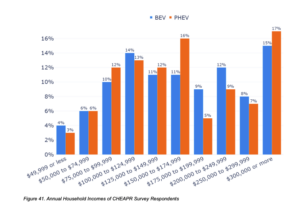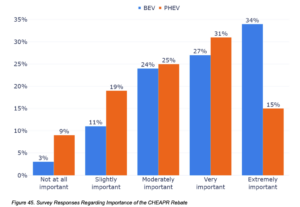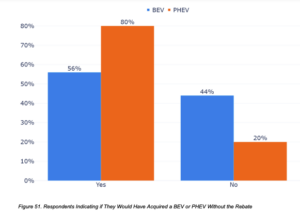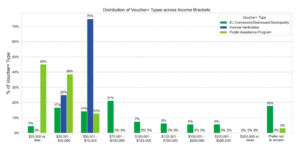At the June 6th meeting of the Connecticut Hydrogen and Electric Automobile Purchase Rebate (CHEAPR) Board, it was revealed that buried in the 2024 Budget Bill is a provision that saddles Connecticut ratepayers with the cost of electric vehicle (EV) rebates by diverting funds from the Regional Greenhouse Gas Initiative (RGGI) to support these subsidies. The measure was signed by Gov. Ned Lamont on May 30.
RGGI comprises eleven Eastern states that impose a cap-and-trade program that aims to reduce carbon dioxide (CO2) emissions from power plants. Power plants must buy permits — called allowances — for each ton of CO2 they emit. These allowances are then sold at auctions. The money raised from selling allowances is used to fund energy efficiency programs and renewable energy projects.
The cost of these allowances is typically passed on to consumers in the form of higher electricity rates, meaning that ratepayers — residential, commercial, and industrial electricity users — ultimately bear the financial burden.
Currently, CHEAPR — who distributes the rebates — is funded solely through the “Clean Air Act” fee on new motor vehicle sales and motor vehicle registration renewals. However, according to Paul Farrell, Director of Air Planning for the Department of Energy and Environmental Protection, it will soon receive an additional revenue stream. Meanwhile, the Connecticut Green Bank, which receives 23% of RGGI funds, will now redirect any amount exceeding $5.2 million to the CHEAPR program.
Farrell estimated that this new funding source will generate an additional $8-$9 million for the program annually.
Additionally, he announced that rebates for low-income individuals, those receiving public assistance and residents who live in an environmental justice (EJ) or distressed municipality — which includes places like Stamford, West Hartford and Farmington — will increase from $4,250 to $6,750.
In 2024, CHEAPR paid out “almost $5.2 million in incentives through the middle of May. So that’s about a $1 million a month burn rate,” Farrell reported.
He projected that they are “on track to have $12-$13 million of incentives dispersed this calendar year, if this rate continues.”
Since 2015, the CHEAPR program has been doling out subsidies for electric vehicles, resulting in a total payout of $28,544,500 for 15,299 rebates from May 19, 2015, to May 27, 2024. Notably, 16% of these rebates were claimed by residents of the state’s top 25 wealthiest zip codes, according to calculations using the U.S. Internal Revenue Service’s 2021 average adjusted gross income data.
In 2023, the program expanded to include rebates for electric bikes (eBikes), distributing $621,128 for 422 redeemed vouchers.
Survey Says
According to the 2024 CHEAPR and CT eBike Incentive Program Annual Report, which analyzed the program‘s performance from July 2022 to June 2023, there was a doubling in EV application volume compared to the previous year.
The increased participation is mostly attributed to a program change that raised the manufacturer’s suggested retail price (MSRP) cap from $42,500 to $50,000, making those able to afford a $50,000 car now eligible for EV welfare.
The report includes a survey of individuals who participated in both the eBike and EV rebate programs, examining demographics, motivations, and rebates’ significance. Out of the 2,316 rebated vehicles purchased or leased during the reporting period, 958 applicants (or 42%) completed the survey.
Key takeaways include that more than 70% of eBike respondents indicated they would not have made the purchase without the rebate, with the top three uses for their bikes being running errands, exercise, and recreation. In essence, taxpayer money is being wasted to subsidize leisure activities for a select few.
Individuals opting for public assistance or income qualification pathways for rebates reported an adjusted gross income (AGI) of less than $75,000. In contrast, 25% of those from the EJ Community/Distressed Municipality group reported incomes over $100,000.
For rebates on battery electric vehicles (BEV), a staggering 80% of survey participants reported household incomes of $100,000 or more. Similarly, 79% of those who redeemed rebates for plug-in hybrid electric vehicles (PHEV) had household incomes exceeding $100,000. The report also highlights a notable rise in participation from households with incomes greater than $300,000, compared to the previous reporting period where only 9% earned above that threshold.

More than one-third of BEV respondents stated that the rebates were only moderately, slightly or not important at all in their purchasing decision. Similarly, more than half of those who purchased PHEVs reported that the rebates fell into these same categories in influencing their decision.

Even more shocking is that 56% of BEV respondents stated they would have purchased the vehicle without a rebate, and a staggering 80% of PHEV buyers echoed this sentiment.

This raises significant questions about the necessity of a program that appears to hold little sway over consumer decisions. Furthermore, it calls into question why the General Assembly would quietly redirect RGGI funds to expand this program, placing the financial burden on ratepayers in a state that has the fifth-highest electricity rates in the country.
Connecticut’s approach to environmental policy appears to be a masterclass in prioritizing optics over substance. The state’s decision to expand a program that greatly benefits the wealthy and has minimal impact on consumer behavior, all under the guise of saving the planet, places the financial burden squarely on ordinary citizens. This legislative strategy is questionable at best.
Perhaps it’s time for lawmakers to reevaluate who really gains from these well-intentioned yet fundamentally flawed programs.
This Week on Yankee’s Podcast Y CT Matters
Dan Hurley, the two-time NCAA champion coach, is staying with the UConn Huskies; Geno Auriemma signed a contract extension; the UConn baseball team made it to the Super Regional of the College World Series; and the WNBA Connecticut Sun is off to a great start.
A lot is happening in Connecticut sports. Joe D’Ambrosio — a sportscaster known as the “Voice of the Huskies” — joins Y CT Matters to discuss all of it. D’Ambrosio is currently the broadcaster for UConn Hockey and UConn baseball, filling in on WJMJ-FM. Follow him here.
Click here to listen


